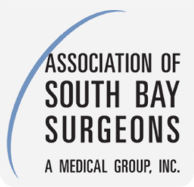Robotic Surgery
Many surgery patients now opt for robotic surgery. This type of surgery is much less invasive than open surgery, and allows for faster recovery. The team at Association of South Bay Surgeons help patients consider their surgical options. Contact the office today for an appointment or consultation.
Robotic Surgery Q & A
Robotic surgery is used for a variety of procedures. It’s commonly used in hernia surgeries, colon and rectal surgeries, and bariatric surgeries. This allows for improved surgical precision and faster patient recovery. Complex hernia surgery has traditionally been considered a more invasive surgery, but robotic surgery offers a better solution. Robotic surgery is now widely considered to be a preferable alternative to open surgery whenever possible.
Laparoscopic surgery and robotic surgery have many things in common, namely they both offer a less invasive alternative to open surgery. However, with laparoscopic surgery, the surgeon must alternate between looking at the surgical instruments and looking at the video display monitor. With robotic surgery, surgical instruments are controlled by robotic arms. The surgeon uses a control console in the operating room and controls the robotic arm movement. The surgeon performs the entire operation with their gaze centered on the video monitor, which allows them to have the most detailed and precise view of the surgical field.
Yes, robotic surgery can be safely used in more complicated surgical procedures. For example, bariatric surgery once required large incisions, sometimes 10 inches or more in length. Today, robotic surgical techniques allow for the incision size to be greatly reduced. Bariatric surgery patients may have a group of small incisions, all under half an inch in size when using robotic surgery. Robotic surgery is also used for procedures like hernia surgery, liver surgery, gallbladder surgery, and many cancer surgeries.
After robotic surgery, recovery depends very much on the individual patient and the specific procedure. For the more minor robotic surgeries, patients often return to their usual routines within a week or less. Some patients go home the day of the procedure, while others may need only to stay a couple days for monitoring. In general, robotic surgery allows for a better cosmetic result and the recovery is faster and less painful.
Complex Hernias
There are a variety of hernias. The most common type is the abdominal wall hernia, which is often not dangerous but never resolves. In reality hernias, if left untreated, usually grows in size and may become a health concern. If your hernia is painful or growing larger, it is time for repair.
A Complex hernia is a more evolved breed of hernia that often occur at the site of a previous hernia repair. This type of hernia is often found in patients who are diabetic or obese. The symptoms of such hernias include abdominal pain, a “bulge” that is often tender to the touch, constipation, vomiting, and a previous hernia.
Here at the Association of South Bay Surgeons, we utilize minimally invasive techniques for repair. These techniques allow us to minimize scarring and dramatically increase the recovery time of our patients. As a result, our patients experience a decreased risk of infection, less postoperative pain, and best of all, usually go home and resume daily activities much quicker than they would have otherwise.
Gallbladder Surgery
Gallbladder surgery may be needed when a patient has inflammation or stones within the gallbladder causing pain. The Association of South Bay Surgeons have expert robotic surgeons who perform gallbladder removal for patient relief. Call our offices today to learn more about this procedure.
Gallbladder Surgery Q & A
Gallstones form in the gallbladder and occur from fluid which harden forming deposits. This fluid is produced in the liver and stored in the gallbladder. The gallbladder is a small storage organ sitting beneath the liver.
There may only be one gallstone or many gallstones of different sizes. Many people have gallstones and do not experience any symptoms. However, people who do have symptoms usually require removal of the gallbladder to prevent any further serious health problems.
- Sudden onset of right upper side or middle upper abdominal pain. This usually occurs after eating. Especially after a fatty meal. The pain can last minutes to several hours.
- Nausea and vomiting
Surgical removal of the gallbladder is the only effective way to treat gallstone disease.
Gallbladder surgery is done by laparoscopic (keyhole) technique or the robotically with small incisions and a video camera. Surgery takes about 45 minutes and is a same day surgery. No overnight stay is needed for most cases.
Patients usually return home 2-3 hours after surgery. Most patients have mild surgery incision site pain and muscle discomfort lasting 2-3 days and usually resume full physical activity within 2 weeks.
Robotic Surgery Team

James E. Camel
MD, MS, FACS

Melanie H. Friedlander
MD, FACS

Catherine A. Madorin
MD, FACS

Houman Solomon
MS, MD, FASMBS










Leave a Reply